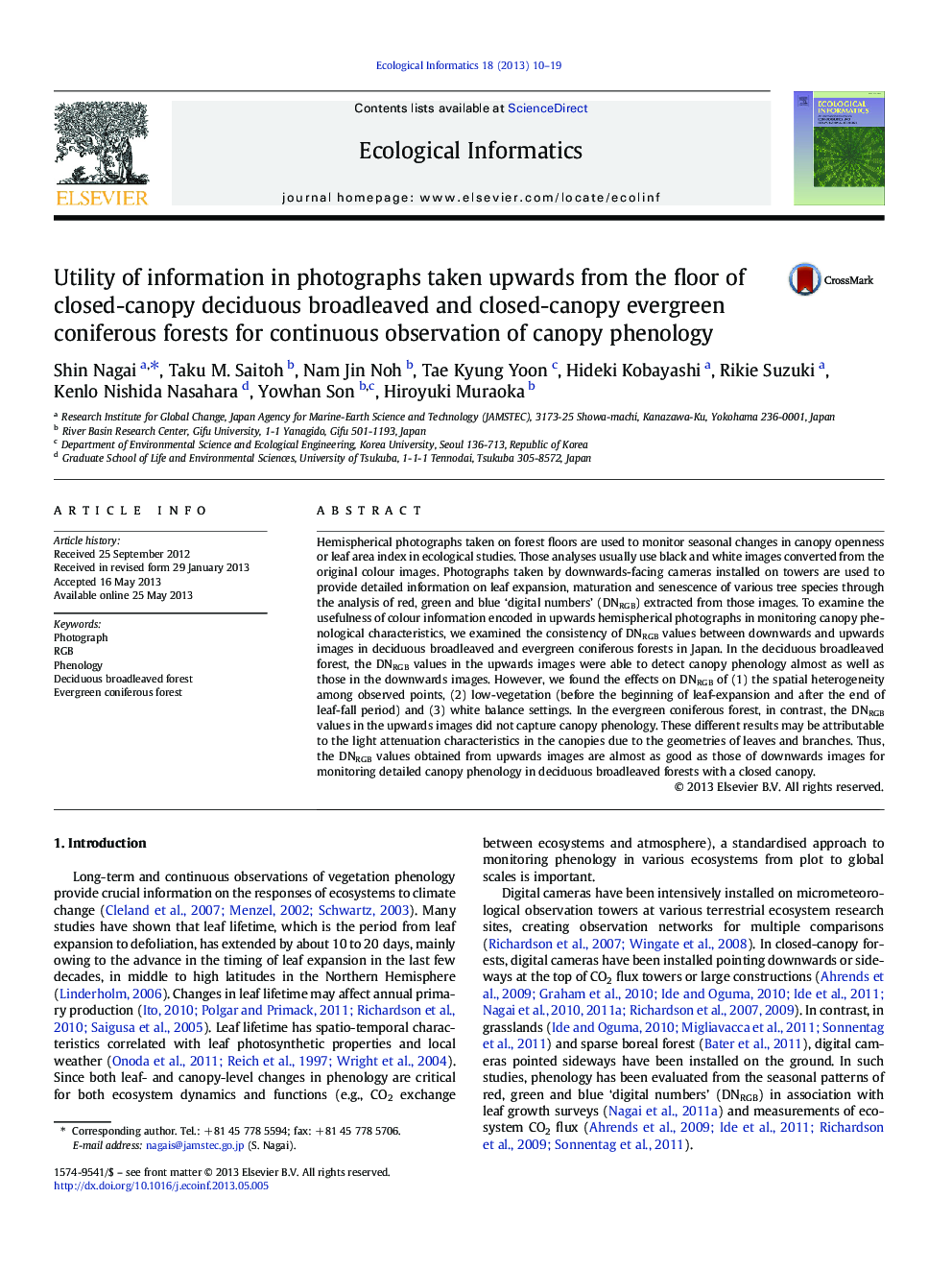| Article ID | Journal | Published Year | Pages | File Type |
|---|---|---|---|---|
| 4374925 | Ecological Informatics | 2013 | 10 Pages |
•We took upwards images on forest floors and downwards images on canopy surface.•We analysed red, green and blue digital numbers (DNRGB) extracted from images.•We examined the consistency of DNRGB values between downwards and upwards images.•Upwards images can detect canopy phenology in a closed deciduous broadleaved forest.•In contrast, the technique cannot be applied in a closed evergreen coniferous forest.
Hemispherical photographs taken on forest floors are used to monitor seasonal changes in canopy openness or leaf area index in ecological studies. Those analyses usually use black and white images converted from the original colour images. Photographs taken by downwards-facing cameras installed on towers are used to provide detailed information on leaf expansion, maturation and senescence of various tree species through the analysis of red, green and blue ‘digital numbers’ (DNRGB) extracted from those images. To examine the usefulness of colour information encoded in upwards hemispherical photographs in monitoring canopy phenological characteristics, we examined the consistency of DNRGB values between downwards and upwards images in deciduous broadleaved and evergreen coniferous forests in Japan. In the deciduous broadleaved forest, the DNRGB values in the upwards images were able to detect canopy phenology almost as well as those in the downwards images. However, we found the effects on DNRGB of (1) the spatial heterogeneity among observed points, (2) low-vegetation (before the beginning of leaf-expansion and after the end of leaf-fall period) and (3) white balance settings. In the evergreen coniferous forest, in contrast, the DNRGB values in the upwards images did not capture canopy phenology. These different results may be attributable to the light attenuation characteristics in the canopies due to the geometries of leaves and branches. Thus, the DNRGB values obtained from upwards images are almost as good as those of downwards images for monitoring detailed canopy phenology in deciduous broadleaved forests with a closed canopy.
